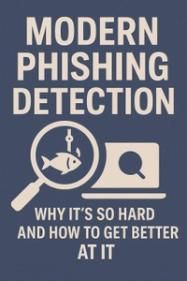Since the introduction of the General Data Protection Regulation (GDPR) in 2018, organizations operating in or serving the EU have faced strict requirements for how they handle personal data. While encryption, access controls, and breach detection systems often take center stage in compliance efforts, the human factor remains one of the biggest security vulnerabilities.
Cybersecurity Awareness Training (CSAT) plays a critical role in GDPR compliance by reducing the likelihood of breaches caused by human error, insider threats, and social engineering. This article explores where CSAT fits into the GDPR framework, what kind of training is needed, and how our AI-driven simulation platform helps organizations meet their compliance obligations.
GDPR Overview: Key Training-Related Requirements
GDPR is built around principles of accountability, transparency, and data protection by design and by default. While it doesn't prescribe exact technical controls, it clearly outlines the need for appropriate organizational measures — including employee training.
Here are some of the most relevant sections:
- Article 5(1)(f): Personal data must be processed “in a manner that ensures appropriate security... including protection against unauthorized or unlawful processing.”
- Article 32(1)(d): Organizations must implement measures such as “the ability to ensure the ongoing confidentiality, integrity, availability and resilience of processing systems and services.”
- Article 39(1)(b): The Data Protection Officer (DPO) is responsible for “monitoring compliance with this Regulation... including the assignment of responsibilities, awareness-raising and training of staff involved in processing operations.”
In short: GDPR mandates that staff be trained, aware, and prepared to handle personal data securely.
The Human Risk in GDPR Compliance
Many GDPR violations occur not due to technology failure but human error. Examples include: Phishing attacks that trick employees into disclosing login credentials for systems holding personal data.
- Smishing scams (SMS phishing) where attackers impersonate colleagues or managers to extract sensitive information.
- Misuse or misdelivery of personal data by unaware or untrained staff.
- Insufficient incident response preparedness when breaches do occur.
These aren’t hypothetical scenarios — many high-profile GDPR fines stem from staff errors or failures in awareness, including cases at Marriott, British Airways, and hospital systems.
Where CSAT Fits Into GDPR Risk Management
Cybersecurity Awareness Training helps organizations meet their obligations under GDPR by:
- Reducing breach likelihood through proactive employee education.
- Demonstrating due diligence in data protection efforts.
- Providing evidence during audits or investigations.
- Supporting a culture of compliance that goes beyond the IT department.
Importantly, GDPR emphasizes continuous and role-specific training — not just one-time onboarding modules.
AI-Driven Simulations for GDPR-Relevant Threats
Our platform delivers advanced, AI-powered simulations to test and train employees across real-world attack vectors. Here’s how we align with GDPR-related threat scenarios:
✉️ Phishing Simulation
Customizable campaigns that mimic real-world credential harvesting attempts targeting HR, finance, and IT.
📱 Smishing Simulation
Simulated SMS attacks impersonating delivery services, internal departments, or cloud platforms used in your stack.
☎️ Vishing Simulation
Voice-based social engineering attempts, training users to spot fraudulent calls requesting personal or client data.
🔁 Scenario Diversity
We provide GDPR-specific scenarios that include:
- Data subject request fraud
- Insider data misuse
- Consent manipulation
- Supply chain impersonation
Each scenario can be tailored to industry, department, and region, providing localized and contextualized training.
Metrics & Audit Readiness
Training without tracking isn't sufficient for GDPR. Our platform supports:
- Automated training records linked to user profiles
- Audit logs exportable for DPOs or regulators
- Engagement analytics for ongoing performance monitoring
- Role-specific training reports to show coverage and effectiveness
These features help demonstrate compliance under Article 32 and provide reassurance to auditors or regulators during a breach investigation.
Best Practices for GDPR-Aligned Awareness Training
To meet GDPR expectations and mitigate human risk, we recommend:
1. Continuous Training
Annual training isn't enough. Our platform supports scheduled campaigns, quarterly refreshers, and just-in-time learning.
2. Role-Based Programs
Tailor content for marketing, HR, finance, IT, and executives. Each group faces different risks and responsibilities under GDPR.
3. Simulate Real Threats
Generic slide decks aren’t effective. Simulations let employees learn by doing — and make mistakes safely.
4. Train Your Supply Chain
Data processors and third-party partners are a GDPR risk. Our platform extends training to external collaborators as needed.
How Our Platform Helps You Stay GDPR-Compliant
Whether you're preparing for your first audit or enhancing your compliance posture, our Cybersecurity Awareness Training platform provides:
- AI-powered phishing, smishing, and vishing simulations
- GDPR-specific training paths for different roles
- Automated evidence logs for regulatory reporting
- Dashboards for DPOs, CISOs, and GRC managers
- Multilingual support for EU-wide deployments
We partner with organizations across healthcare, finance, SaaS, and public sectors to drive measurable improvements in both awareness and compliance.
Conclusion: Human Risk Is a GDPR Compliance Risk
Organizations can no longer afford to treat awareness training as a checkbox. Under GDPR, every employee is a potential attack surface — and also a line of defense.
By investing in a structured, measurable, and simulation-based training program, you significantly reduce the risk of costly breaches and demonstrate your commitment to data protection.
Request a Demo
See how our AI-powered Awareness Training platform can help your organization meet GDPR compliance requirements — and build a stronger human firewall.

